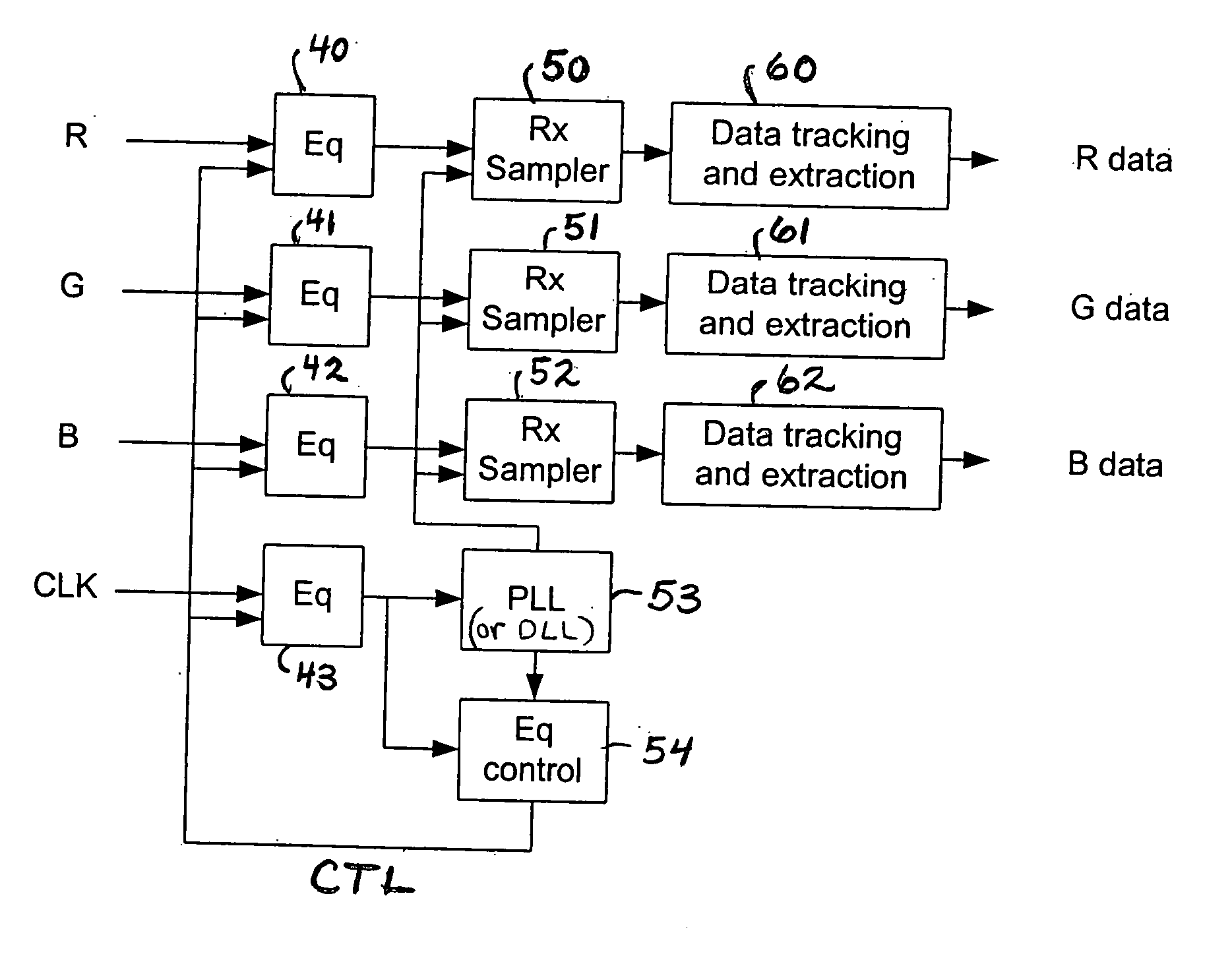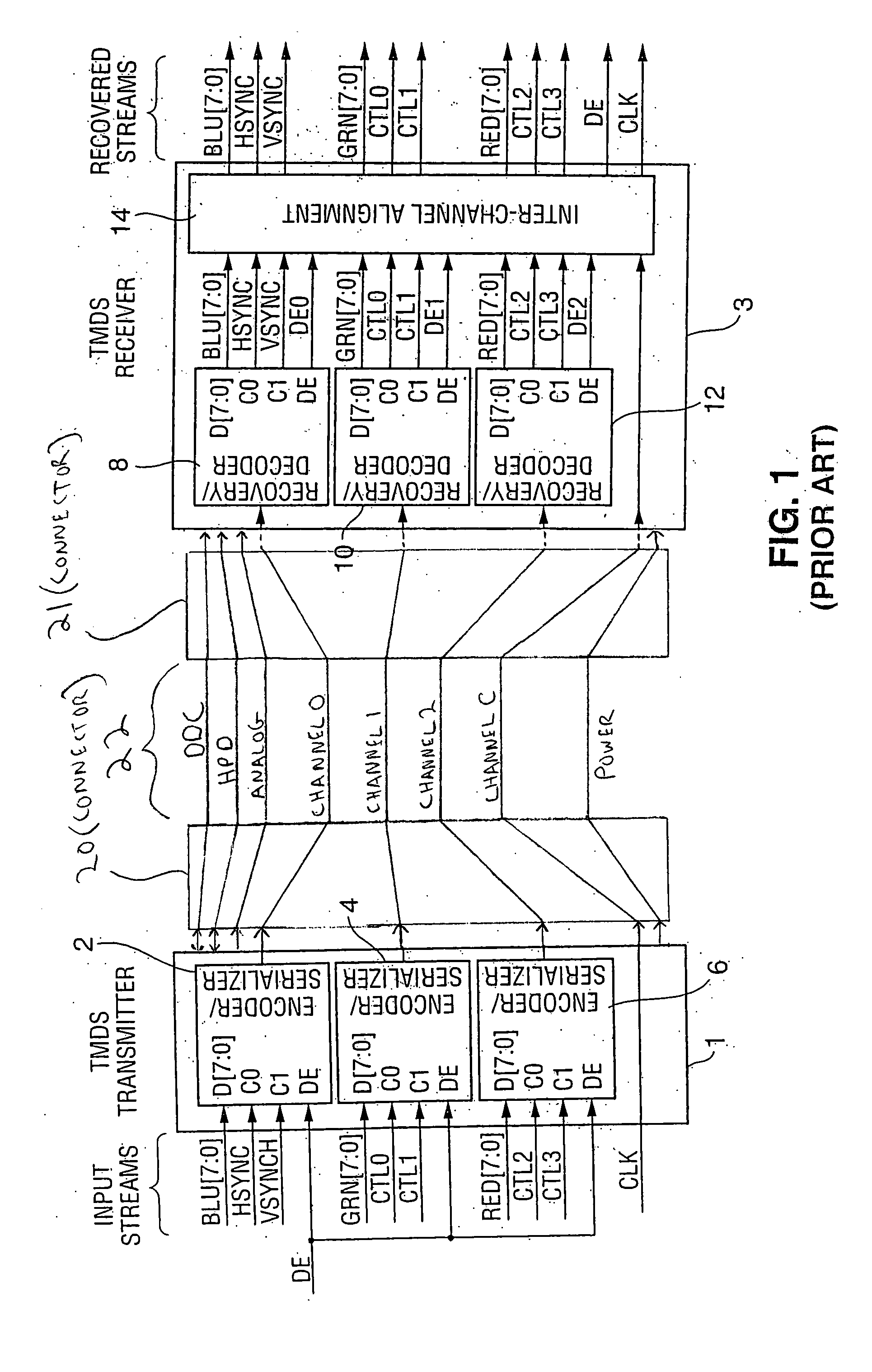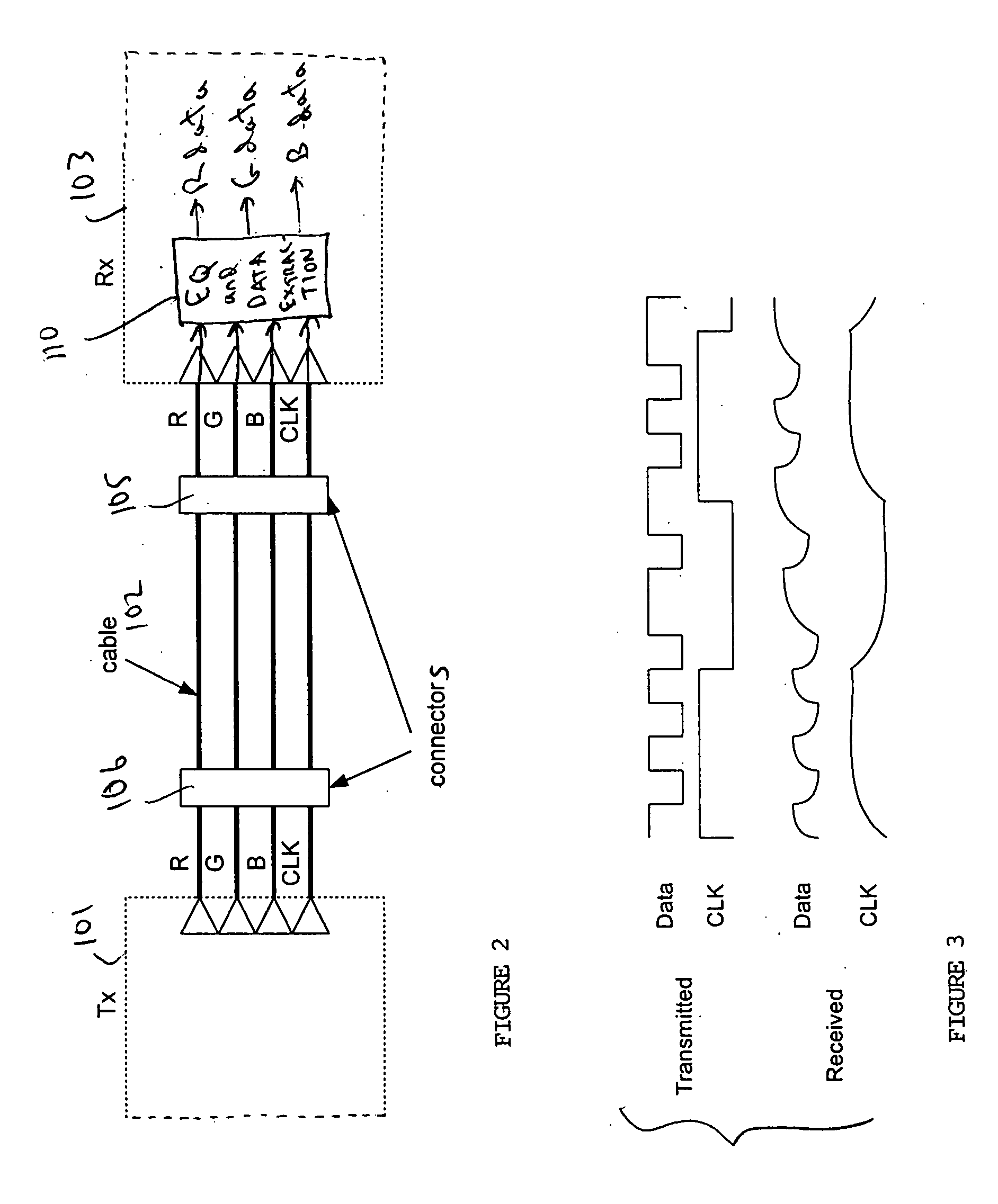Method and circuit for adaptive equalization of multiple signals in response to a control signal generated from one of the equalized signals
a technology of adaptive equalization and control signal, applied in the direction of amplitude demodulation, line-fault/interference reduction, pulse technique, etc., can solve the problems of reducing the signal quality at the receiver end, increasing the chance of false detection of signals received, and almost unusable eye at the receiver, etc., to achieve simple and robust
- Summary
- Abstract
- Description
- Claims
- Application Information
AI Technical Summary
Benefits of technology
Problems solved by technology
Method used
Image
Examples
Embodiment Construction
[0044] In preferred embodiments, the invention is a method and apparatus for performing adaptive equalization on clock and data signals transmitted over different channels of a multi-channel serial link, where the link includes a clock channel (over which the clock signal propagates) and at least one data channel. A data signal is transmitted serially over each data channel. In alternative embodiments, the invention is a method and apparatus for performing adaptive equalization on a fixed pattern signal and at least one other signal transmitted over a multi-channel serial link. The following description of the preferred embodiments also applies to the alternative embodiments, with minor modifications that will be apparent to those of ordinary skill in the art (e.g., substitution of references to a transmitted fixed pattern signal for references to a transmitted clock signal).
[0045]FIG. 2 is a simplified block diagram of a system that embodies the invention. The FIG. 2 system includ...
PUM
 Login to View More
Login to View More Abstract
Description
Claims
Application Information
 Login to View More
Login to View More - R&D
- Intellectual Property
- Life Sciences
- Materials
- Tech Scout
- Unparalleled Data Quality
- Higher Quality Content
- 60% Fewer Hallucinations
Browse by: Latest US Patents, China's latest patents, Technical Efficacy Thesaurus, Application Domain, Technology Topic, Popular Technical Reports.
© 2025 PatSnap. All rights reserved.Legal|Privacy policy|Modern Slavery Act Transparency Statement|Sitemap|About US| Contact US: help@patsnap.com



